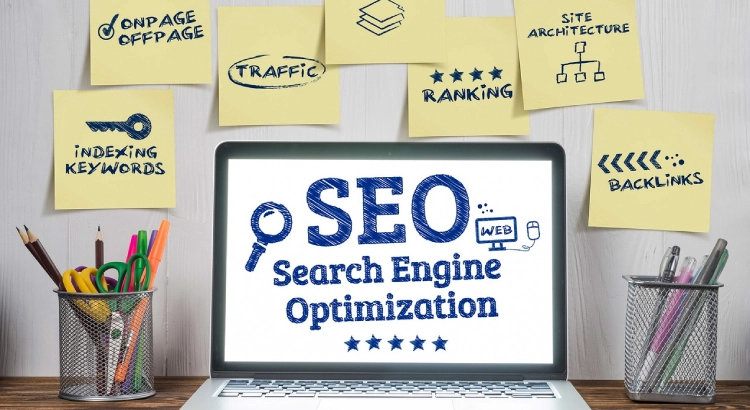You’ve probably heard that SEO is essential in digital marketing. But do you really understand how it works? A search engine optimization company helps businesses improve their online presence by using strategies that boost search rankings and drive organic traffic. Higher rankings mean more visibility, increased traffic, and better chances of converting visitors into customers. With search engines constantly updating their algorithms, businesses must stay ahead with effective strategies.
What Is Search Engine Optimization?
It involves various techniques to improve online visibility. By optimizing a site, businesses can increase their chances of appearing in organic search results.
Research shows that the top position on Google gets the highest click-through rate, with the second and third results receiving significantly lower engagement. Securing a top spot means more traffic and greater opportunities to convert visitors into customers.
Artificial intelligence is also shaping how websites gain visibility. AI-powered algorithms, such as Google’s RankBrain, enhance the way users find relevant results, making SEO more complex yet more effective.
Types of SEO
SEO is a combination of strategies designed to improve a website’s visibility on SERPs. It can be divided into three main categories:
Technical SEO
Technical SEO focuses on optimizing the backend elements of a website to ensure search engines can crawl, index, and understand its content effectively. It starts with a well-structured website architecture, including a clean URL structure, proper navigation, and internal linking.
User experience also essential, with factors like page speed, mobile-friendliness, and secure HTTPS connections impacting rankings. Additionally, structured data (schema markup) enhances how search engines interpret and display content in search results. Other technical aspects, such as hosting services, CMS selection, and site security, further contribute to SEO performance.
On-Page Optimization
On-page optimization involves optimizing the visible content on a website to ensure it meets both user expectations and search engine guidelines. High-quality, relevant website copy that includes targeted keywords, accurate information, and engaging multimedia elements improves rankings. Readability and structure are also key, with the use of headings, subheadings, and proper formatting enhancing user experience.
From a technical standpoint, optimizing title tags, meta descriptions, header tags, and image alt text ensures that search engines correctly interpret and rank site copy. An emerging trend, Generative Engine Optimization (GEO), involves tailoring content for AI-driven search engines like Google AI Overviews, OpenAI’s ChatGPT, and Microsoft Copilot to improve visibility in evolving search landscapes.
Off-Site Optimization
Off-site optimization involves external factors that influence a website’s reputation and authority. The most recognized aspect is link building, which involves acquiring high-quality backlinks from authoritative sources to enhance credibility. Other activities include brand marketing, PR campaigns, and content marketing through videos, research studies, and guest blogging.
Social media optimization strengthens a brand’s online presence, while listing management ensures accurate business details across directories and review platforms. Managing ratings and reviews also important in maintaining trust and influencing search visibility. While off-site SEO does not directly control rankings, it significantly impacts brand awareness and search engine trust signals.
How Does Search Engine Optimization Work?
If you arrived at this page via Google, you likely searched for something like [what is SEO?].
This page ranks well because it is published on an authoritative website that has built trust over time. Years of consistent, high-quality content and industry recognition have helped it secure a top position.
SEO works through a combination of:
- People: Experts responsible for executing strategic improvements
- Processes: Efficient methods used to enhance website performance
- Technology: Tools and platforms that assist in the campaign
- Activities: The final execution of effective strategies
Each factor contributes to better online visibility and sustainable growth in website traffic.
Why Is SEO Important?
Many businesses invest in site optimization because it delivers measurable results. Here are some key benefits:
1. Increases Organic Traffic
Higher rankings mean more visitors without relying on paid ads. Optimized websites receive consistent traffic from users searching for relevant information, products, or services, making it a cost-effective way to grow an audience and increase conversions.
2. Enhances User Experience
A well-structured site with fast loading times, mobile-friendly design, and clear navigation improves usability. Visitors are more likely to stay longer and engage with content, reducing bounce rates and increasing the chances of conversion.
3. Builds Credibility and Trust
Websites that appear at the top of search results are perceived as more authoritative. Quality content, backlinks from reputable sources, and a well-maintained website signal reliability, making it easier to establish trust with potential customers.
4. Cost-Effective Marketing Strategy
Unlike paid advertising, which requires ongoing investment, optimization efforts provide lasting benefits. Once a website ranks well, it continues to attract visitors without additional costs, making it one of the most cost-effective digital marketing strategies available.
5. Gives a Competitive Edge
Businesses with a strong online presence outperform competitors who ignore optimization. Ranking above rivals for industry-related terms increases brand visibility and captures potential customers before they turn to alternative options.
6. Boosts Local Business Visibility
For companies serving a specific area, local SEO helps attract nearby customers. Listings on directories, location-based keywords, and customer reviews improve search visibility, increasing foot traffic and sales for brick-and-mortar businesses.
7. Supports Content Marketing Efforts
Optimized content attracts the right audience and improves engagement. Articles, blogs, and videos tailored to user intent generate traffic, keep visitors interested, and strengthen an overall content marketing strategy for long-term success.
8. Delivers Long-Term Results
Unlike paid campaigns that stop bringing traffic once the budget runs out, a well-optimized site continues to perform. With regular updates and strategic improvements, rankings and traffic remain steady over time.
9. Improves Conversion Rates
Targeting the right audience with relevant content increases the likelihood of turning visitors into customers. Well-optimized pages with clear calls-to-action guide users through the sales funnel, boosting lead generation and sales.
10. Aligns with Changing Trends
As online algorithms evolve, businesses must adapt to maintain visibility. Regular updates to content, keywords, and site structure help stay ahead of industry shifts and ensure continued success in attracting and retaining customers.
Final Thoughts
SEO is a continuous process that evolves alongside search engine algorithms. Whether through technical improvements, content enhancements, or off-site efforts, businesses that invest in ranking strategies gain a competitive edge.
By staying ahead of digital trends and refining the strategies, websites can achieve long-term success in attracting and converting visitors.


